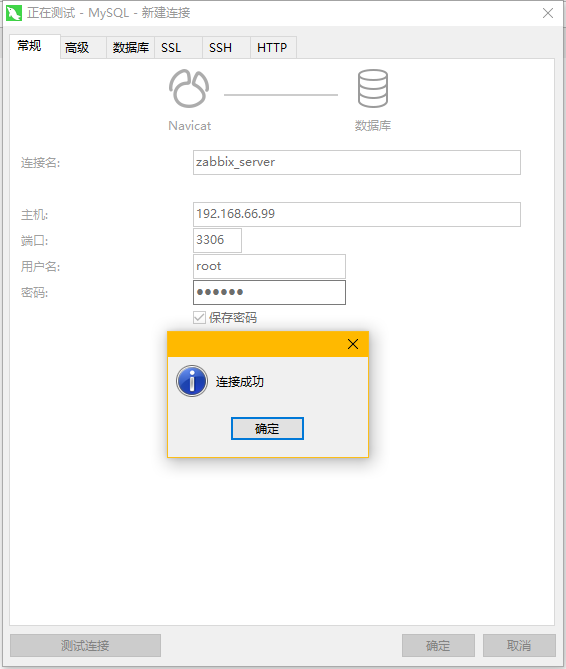LNMP环境之编译安装mysql
环境:centos7
mysql版本:5.7.28
mysql下载地址:
链接:https://pan.baidu.com/s/1SQaSQ57SSkAh2all4YXAhQ
提取码:lz1p
1.首先查看系统是否自带mariadb
[root@localhost ~]# rpm -qa | grep mariadb mariadb-libs-5.5.68-1.el7.x86_6
2.删除系统自带的mariadb
[root@localhost ~]# rpm -e --nodeps mariadb-libs-5.5.68-1.el7.x86_64
3.查看系统是否自带mysql,有则删除无则创建mysql用户和组
[root@localhost ~]# rpm -qa | grep mysql
4.创建mysql用户和组,并将mysql拥护赋予mysql组
[root@localhost ~]# groupadd mysql && useradd -g mysql mysql
5.更改mysql用户的密码
[root@localhost ~]# passwd mysql Changing password for user mysql. New password: Retype new password: passwd: all authentication tokens updated successfully.
6.将mysql压缩包上传至当前服务器目录
[root@localhost ~]# ll total 707692 -rw-------. 1 root root 1259 Jan 29 22:30 anaconda-ks.cfg -rw-r--r--. 1 root root 724672294 Feb 2 18:59 mysql-5.7.28-linux-glibc2.12-x86_64.tar.gz
7.解压mysql至根目录
[root@localhost ~]# tar -zxvf mysql-5.7.28-linux-glibc2.12-x86_64.tar.gz -C /
8.将mysql目录改名,创建/mysql/data目录,并赋予mysql用户和组
[root@localhost ~]# mv /mysql-5.7.28-linux-glibc2.12-x86_64/ /mysql && mkdir /mysql/data && chown -R mysql:mysql /mysql
9.进入mysql目录并创建一个my.cnf文件
[root@localhost /]# cd /mysql/ && vim my.cnf
10.将下列内容写入my.cnf,随后保存退出
[client] port = 3306 socket = /mysql/data/mysql.sock default-character-set = utf8mb4 [mysqld] user= mysql port= 3306 socket= /tmp/mysql.sock server-id = 1 pid-file = /mysql/data/mysql.pid basedir= /mysql datadir= /mysql/data/ character_set_server = utf8mb4 collation_server = utf8mb4_bin back_log = 1024 explicit_defaults_for_timestamp = ON lower_case_table_names = 1 sql_mode = STRICT_TRANS_TABLES,NO_ZERO_IN_DATE,NO_ZERO_DATE,ERROR_FOR_DIVISION_BY_ZERO,NO_AUTO_CREATE_USER,NO_ENGINE_SUBSTITUTION max_connections = 512 max_connect_errors = 1000000 table_open_cache = 1024 max_allowed_packet = 1024M thread_stack = 256K thread_cache_size = 384 skip-external-locking interactive_timeout = 600 wait_timeout = 3600 log_timestamps = SYSTEM log-error = /mysql/data/error.log default_storage_engine = InnoDB innodb_buffer_pool_size = 64M innodb_purge_threads = 1 innodb_log_buffer_size = 2M innodb_log_file_size = 128M innodb_lock_wait_timeout = 120 bulk_insert_buffer_size = 32M myisam_sort_buffer_size = 8M myisam_max_sort_file_size = 1G myisam_repair_threads = 1 [mysqldump] quick max_allowed_packet = 16M [myisamchk] key_buffer_size = 8M sort_buffer_size = 8M read_buffer = 4M write_buffer = 4M basedir=/mysql datadir=/mysql/data
11.安装mysql
[root@localhost mysql]# bin/mysql_install_db --user=mysql --basedir=/mysql --datadir=/mysql/data 2021-02-02 19:20:55 [WARNING] mysql_install_db is deprecated. Please consider switching to mysqld --initialize 2021-02-02 19:20:58 [WARNING] The bootstrap log isn't empty: 2021-02-02 19:20:58 [WARNING] 2021-02-02T11:20:55.448665Z 0 [Warning] --bootstrap is deprecated. Please consider using --initialize instead 2021-02-02T11:20:55.449035Z 0 [Warning] Changed limits: max_open_files: 1024 (requested 5000) 2021-02-02T11:20:55.449039Z 0 [Warning] Changed limits: table_open_cache: 431 (requested 2000)
12.安装完毕后配置mysqld启动文件赋予执行权限,并赋予my.cnf目录权限
[root@localhost mysql]# cp ./support-files/mysql.server /etc/init.d/mysqld && chown 777 my.cnf && chmod +x /etc/init.d/mysqld
13.修改mysqld执行文件
[root@localhost mysql]# vim /etc/init.d/mysqld
14.从上到下将所有/usr/local/mysql的路径修改为/mysql 注:linux会默认将所有用户编译安装的软件安装在/usr/local目录下,类似于windows的c:/progrem files
mysqld_pid_file_path= if test -z "$basedir" then basedir=/usr/local/mysql bindir=/usr/local/mysql/bin if test -z "$datadir" then datadir=/usr/local/mysql/data fi sbindir=/usr/local/mysql/bin libexecdir=/usr/local/mysql/bin else bindir="$basedir/bin" if test -z "$datadir" then datadir="$basedir/data" fi sbindir="$basedir/sbin" libexecdir="$basedir/libexec"
15.修改完毕保存退出后创建一个软链接用于启动停止mysql
[root@localhost mysql]# ln -s /mysql/bin/mysql /usr/bin/
16.创建完毕后启动mysql
[root@localhost mysql]# service mysqld start Starting MySQL.Logging to '/mysql/data/error.log'. SUCCESS!
17.此时输入用户名密码会报错,所以需先设置无密码登录
[root@localhost ~]# mysql -uroot -p Enter password: ERROR 1045 (28000): Access denied for user 'root'@'localhost' (using password: YES)
18.编辑my.cnf文件,加入 skip-grant-tables 至 [mysqld] 模块内
[client] port = 3306 socket = /mysql/data/mysql.sock default-character-set = utf8mb4 [mysqld] skip-grant-tables user= mysql port= 3306 socket= /tmp/mysql.sock server-id = 1 pid-file = /mysql/data/mysql.pid
19.保存退出后重启mysql
[root@localhost mysql]# service mysqld restart Shutting down MySQL.. SUCCESS! Starting MySQL. SUCCESS!
20.再次输入用户名,随后直接回车即可实现无密码登录
[root@localhost mysql]# mysql -uroot -p Enter password: Welcome to the MySQL monitor. Commands end with ; or \g. Your MySQL connection id is 2 Server version: 5.7.28 MySQL Community Server (GPL) Copyright (c) 2000, 2019, Oracle and/or its affiliates. All rights reserved. Oracle is a registered trademark of Oracle Corporation and/or its affiliates. Other names may be trademarks of their respective owners. Type 'help;' or '\h' for help. Type '\c' to clear the current input statement. mysql>
21.进入mysql后需先修改一次密码
首先编辑数据库
mysql> use mysql; Reading table information for completion of table and column names You can turn off this feature to get a quicker startup with -A Database changed
随后修改root用户的密码
mysql> update user set authentication_string=password('123456') where user='root'; Query OK, 1 row affected, 1 warning (0.00 sec) Rows matched: 1 Changed: 1 Warnings: 1
最后刷新权限推出数据库
mysql> flush privileges; Query OK, 0 rows affected (0.01 sec) mysql> quit Bye
22.退出后将刚在my.cnf里加入的一行注释或删除,然后保存退出重启数据库
[root@localhost mysql]# vim my.cnf [root@localhost mysql]# service mysqld restart Shutting down MySQL.. SUCCESS! Starting MySQL. SUCCESS!
23.用刚修改的用户名密码登录数据库,成功!
[root@localhost mysql]# mysql -uroot -p Enter password: Welcome to the MySQL monitor. Commands end with ; or \g. Your MySQL connection id is 2 Server version: 5.7.28 Copyright (c) 2000, 2019, Oracle and/or its affiliates. All rights reserved. Oracle is a registered trademark of Oracle Corporation and/or its affiliates. Other names may be trademarks of their respective owners. Type 'help;' or '\h' for help. Type '\c' to clear the current input statement. mysql>
24.但此时操作数据库会提示
mysql> use mysql; ERROR 1820 (HY000): You must reset your password using ALTER USER statement before executing this statement.
我们只需按提示重新alter一下密码,然后退出重新登陆即可
mysql> ALTER USER 'root'@'localhost' IDENTIFIED BY '123456' PASSWORD EXPIRE NEVER; Query OK, 0 rows affected (0.00 sec) mysql> flush privileges; Query OK, 0 rows affected (0.00 sec) mysql> quit Bye
[root@localhost mysql]# mysql -uroot -p
Enter password:
Welcome to the MySQL monitor. Commands end with ; or \g.
Your MySQL connection id is 3
Server version: 5.7.28 MySQL Community Server (GPL)
Copyright (c) 2000, 2019, Oracle and/or its affiliates. All rights reserved.
Oracle is a registered trademark of Oracle Corporation and/or its
affiliates. Other names may be trademarks of their respective
owners.
Type 'help;' or '\h' for help. Type '\c' to clear the current input statement.
mysql> use mysql;
Reading table information for completion of table and column names
You can turn off this feature to get a quicker startup with -A
Database changed
25.此时如果想利用本地数据库工具如navicat等远程连接数据库,需开放数据库远程权限及数据库端口,否则会报1130和2003报错
首先开放远程权限
mysql> use mysql; Reading table information for completion of table and column names You can turn off this feature to get a quicker startup with -A Database changed mysql> update user set host='%' where user='root'; ##修改root用户的权限为所有 Query OK, 1 row affected (0.01 sec) Rows matched: 1 Changed: 1 Warnings: 0 mysql> select host,user from user; ##查看用户的权限 +-----------+---------------+ | host | user | +-----------+---------------+ | % | root | | localhost | mysql.session | | localhost | mysql.sys | +-----------+---------------+ 3 rows in set (0.00 sec) mysql> flush privileges; ##刷新权限 Query OK, 0 rows affected (0.00 sec) mysql> quit Bye
退出后服务器防火墙开3306端口
[root@localhost mysql]# firewall-cmd --zone=public --add-port=3306/tcp --permanent && firewall-cmd --reload
success
success
随后重启数据库
[root@localhost mysql]# service mysqld restart Shutting down MySQL.. SUCCESS! Starting MySQL. SUCCESS!
26.最后使用数据库工具远程连接数据库,成功!

这样我们的mysql数据库就安装好了!


